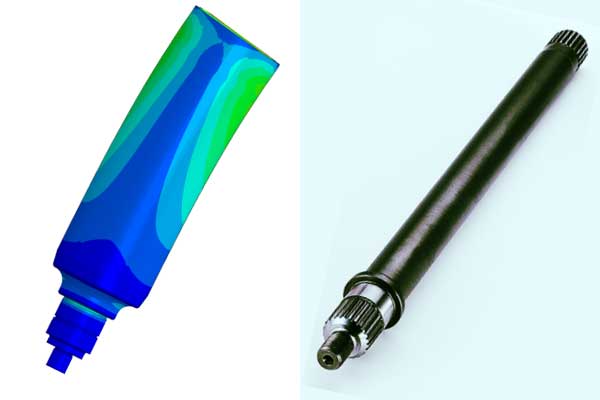Picture credit: ierservices.com
The client reached out to Optimec to investigate the duty cycle life of a motor shaft subjected to cycling loads caused by rotation. In general, a duty cycle contains dozens of input load cases, each requiring fatigue calculations based on preliminary finite element analyses.
Many companies in the industry only perform simple fatigue calculations, which are not suitable for complex fatigue or yield overly conservative results.
Optimec has the knowledge and tools to perform a comprehensive complex fatigue analysis.
The methodology utilized in this particular fatigue analysis is explained as follows:
First, our team performed static analyses in Abaqus to investigate and determine the position of the shaft that would yield the most severe stress results. Based on these findings, we prepared preliminary static analyses for each input load case of the duty cycle to be used in Fe-safe for fatigue calculation.
Then, we performed the duty cycle fatigue analysis in Fe-safe using fully reversed loading blocks, with one block for each input load case.
Afterward, we executed a verification test to assess the fatigue results of the most severe input load cases of the duty cycle. The preliminary static analyses performed in Abaqus represent a full rotation of the shaft under constant loads with considerations made for every 10° of the rotation . The preliminary stress results were used to sequence the loading fatigue analysis in Fe-safe.
Several challenges were encountered during the project, such as the following:
1. Understanding the most severe position of the shaft under applied loads during rotation.
2. Dividing input load cases is as follows:
- Loads that create cycling stresses.
- Loads that create constant stresses.
By dividing the input loads into force and moment, one category can be considered as cycling and the other as constant.
3. Dealing with a vast number of analyses and models.
4. Finding inconsistencies in the data: At first, the verification test’s results, using sequence loading blocks, did not match the results of the fully reversed fatigue analysis. An investigation has shown that stress results were written in different coordinate systems for each preliminary analysis. We resolved the issue by ensuring that stresses are written in the same coordinate system and verifying that the fatigue results of both options match.
Key results from this motor shaft duty cycle fatigue analysis:
1. Two methods are available for performing duty cycle fatigue analysis of the rotating part: using fully reversed loading blocks or sequence loading blocks
2. When dealing with a duty cycle assembled with multiple input load cases, where each input includes loads and a certain number of repeats, it is recommended to utilize fully reversed loading fatigue analysis. However, for rotating parts, this method provides precise results for a specific area (and its counterpart at 180°). Thus, in the preliminary static finite element analysis, the cycling load must be applied in the direction that gives the most severe results for the part.
3. To obtain precise results for the entire circumference of the part, it is necessary to perform a sequence loading fatigue analysis. However, this approach requires a significantly higher number of preliminary finite element analyses for each input load case of the duty cycle to represent a full rotation of the part. For similar projects, we recommend using this method for verification or details exploration, focusing on just one or few of the duty cycle’s input load cases.
4. For sequence loading fatigue analysis, it is vital to get the results of all the preliminary static finite element analyses in the same coordinate system. For a rotating part, rotating the loads instead of the whole finite element model should be considered.
5. Constant loads can be applied as residual stress for both fully reversed loading and sequence loading fatigue analysis.

